FAQ
-
Aren't all sealers the same?
Absolutely not! We precisely manufacture and apply ECOAMIGO™ asphalt sealer, a proprietary, environmentally friendly, non-toxic, polymer modified sealer that will outlast any regular sealer available and that includes coal tar based sealers.
-
What are PAH's and VOC's and why should I care?
The high PAH (poly aromatic hydrocarbons) levels found in coal tar based sealer have been found to be cancer causing.
Have you ever had sealcoating done and there is an awful smell even after it's dry? That's napthalene, a nasty, cancer causing chemical that's present in all coal tar sealers "evaporating" into the atmosphere. This can happen weeks and even months after application and can also cause skin rashes, eye irritation and headaches. This is to what VOC ( Volatile Organic Compounds) refers.
http://tx.usgs.gov/sealcoat.html
-
Ok but why NEXTGEN Great Sealcoating?
We're a family owned and operated business that specializes in superior, eco-friendly asphalt maintenance while providing great service with fair pricing. We have an A+ rating with the Better Business Bureau and an A rating with Angie's List.
-
Alligator Cracking
Some people call it spider web cracking, alligatoring, cluster crack etc. What’s happened here is that the foundation of the driveway has been compromised by water and is slowly eroding away. Then from the weight of cars and even gravity you get that “shattered glass” appearance. We’ll apply a trowelable crack sealer over the area which may help. While not always, most likely this will get worse over time. Eventually you may even see your driveway “bleeding” water through this area.
-
How often should I sealcoat my asphalt?
Sealcoating is a maintenance act similar to changing the oil in your car. How often depends on many variables but generally:
For a driveway every 2-4 years.
Commercial life depend on applications, traffic volume and formula of sealer requested, etc. Could be anywhere from 2-6 years. Our facility allows us to customize the formula based upon your particular asphalt condition. Please contact us for more details.
-
Oil spots
We'll "double coat" oil spots to ensure our Eco-Amigo sealer will bond with the asphalt in that area, but depending how much oil is present, you may still see the stain in which case the only remedy is to cut out the area surrounding the oil and replace with new asphalt.
-
My quote says pitting/peeling
Put another way, asphalt pitting is asphalt that has lost stones and possibly even binder in places so there are small craters, typically a sign of brittleness. Eco Amigo can help stop more pitting but nothing short of repaving can make it smooth. Peeling is just that-an old sealer, usually coal tar or latex based failed to bond with the asphalt and is now peeling off. This condition will most likely get worse, before getting better. While Eco Amigo bonds extremely well with asphalt, if the "offending" old sealer is too thick, it could affect the effectiveness. If in doubt, a pressure washer may be able to remove the old sealer.
-
I see tire marks or brush marks
Because the sealcoating material contains a fine grit to give it a durable non-slip surface, you may see some scuffing of the grit, much as you would when rubbing sandpaper. Please be extra careful turning your steering wheel sharply (k-turns) when your car or mower is idling or moving slowly, this can also cause tire tracks. These marks will blend in over several weeks and are neither a problem nor indication of any lifting.
-
What hurts or damages asphalt and sealcoating?
Weather conditions like freeze/thaw, direct strong sunlight, high volume traffic, forceful snow removal, heavily shaded areas and standing water and ice.
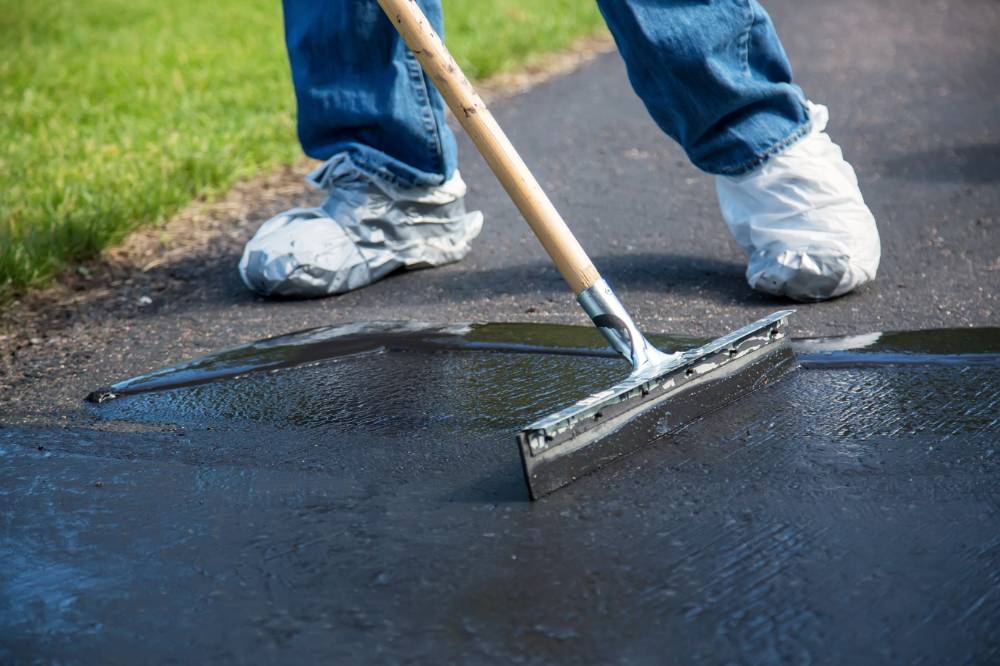
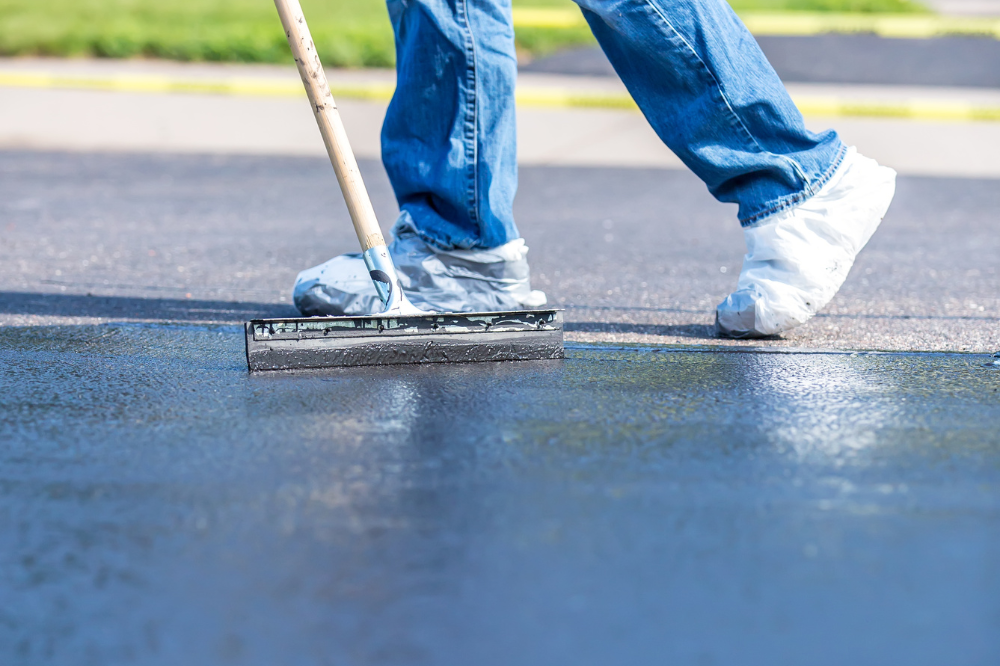
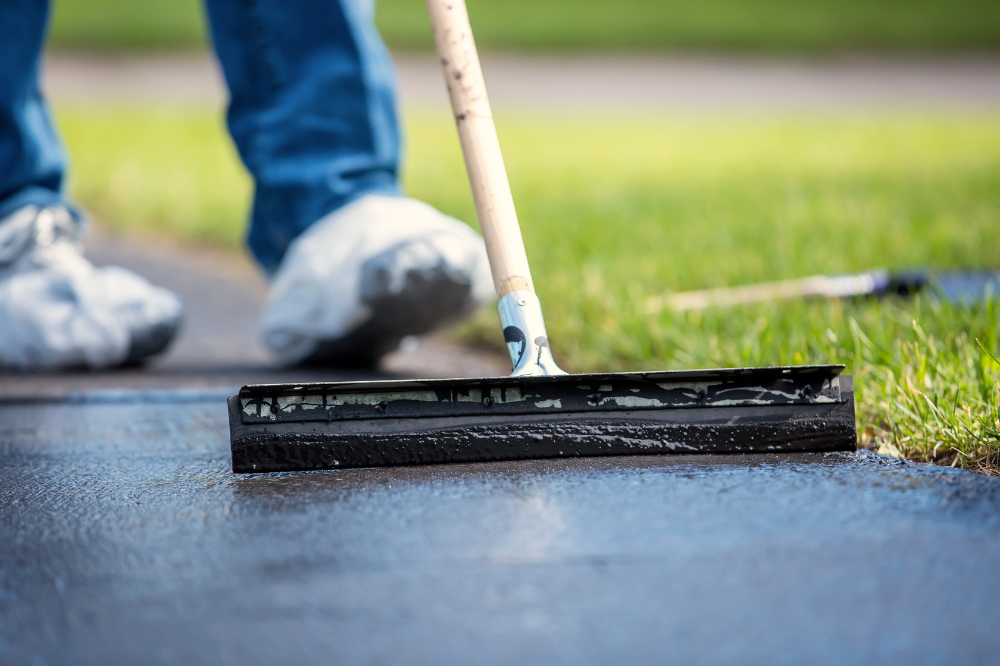
What About Cracks?
Cracks are mostly caused by shifting of the ground. First we'll clean all cracks, then we'll seal larger (3/8' and up) cracks using a rubberized material heated to 380 degrees and after pouring that material into the crack, topping it with a black sand like material. For smaller cracks a very thick material is applied to help cover and stabilize those areas. How large the crack is will determine if you can see it after sealcoating (see below).
Additionally, In order for the crack material to remain flexible during cold months, it may even seem soft in hot months and you may even see some settling and/or reopening. All of this is normal and to be expected.
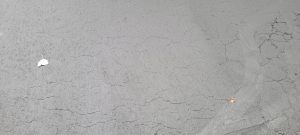
What are Surface Cracks?
Surface cracks are typically small fissures that appear in the asphalt surface. Crack sealers aren't an appropriate remedy. Our sealcoating will seal these areas but they can't be "filled" so the finish may not be smooth.
My Asphalt is Rough. Can You Smooth it Out?
Sealers protect, preserve and beautify and as such are designed to "soak into" and bond with the asphalt. It's not like icing a cake, the only remedy for a rough surface, low spot (bird bath) or other defect is patching or re-paving.
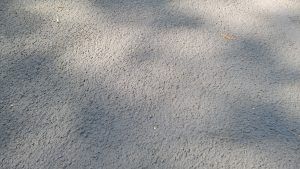
IMPORTANT LINKS
NEWSLETTER
Newsletter
We will get back to you as soon as possible.
Please try again later.
NJ License #13VH01319300
PA License #PA132219
Rockland County, NY License #7994
All Rights Reserved | NextGen Great Sealcoating | Powered By Quantifi Media
